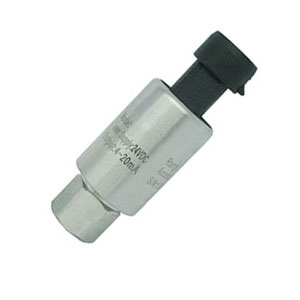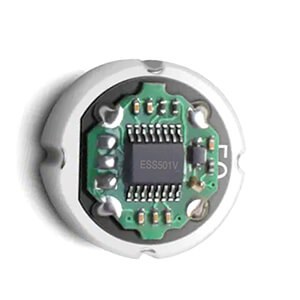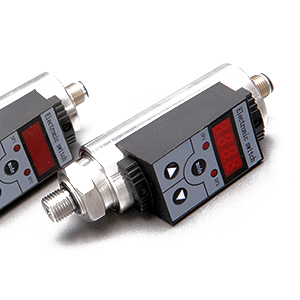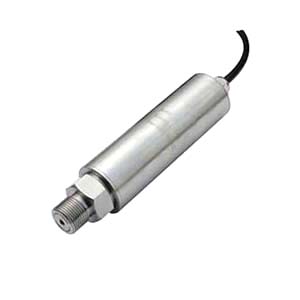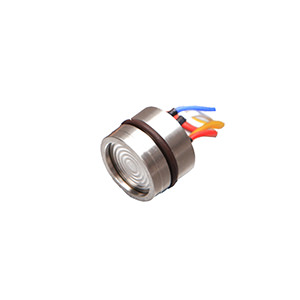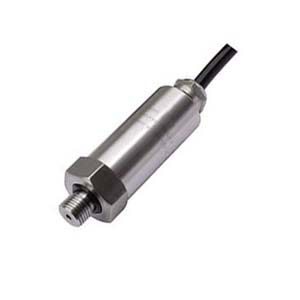What is water pressure sensor?
A water pressure sensor, also known as a liquid pressure sensor, is a device that measures the pressure exerted by a liquid, such as water, within a closed system. These sensors are commonly used in applications like water supply systems, hydraulic systems, and water-based HVAC systems to monitor and control the pressure of the liquid.
Water pressure sensors typically consist of a pressure-sensitive element, such as a diaphragm or a strain gauge, which converts the applied pressure into an electrical signal. This signal can then be processed, displayed, or used for control purposes.
In simple terms, when water pressure is applied to the pressure-sensitive element, it causes a change in the sensor’s electrical properties, such as resistance or capacitance. This change is proportional to the applied pressure and can be translated into a pressure measurement using electronic circuitry.
How water pressure sensor works exactly?
A water pressure sensor measures the pressure exerted by water or other liquids within a closed system. It mainly consists of two parts: a pressure-sensitive element and an electrical circuit.
Pressure-sensitive element: This component, usually a diaphragm or a strain gauge, is the heart of the sensor. It’s made of a flexible material, such as metal or a special kind of plastic, which deforms when water pressure is applied to it.
Electrical circuit: This part of the sensor translates the deformation of the pressure-sensitive element into an electrical signal that can be processed and used for monitoring or control purposes.
Now let’s break down the process step by step:
When water pressure is applied to the sensor, the pressure-sensitive element (e.g., diaphragm or strain gauge) experiences a deformation or change in shape.
This deformation changes the electrical properties of the element, such as its resistance or capacitance.
The electrical circuit within the sensor detects these changes and converts them into an electrical signal (e.g., voltage 0.5V-4.5V or current 4-20mA or other digital signals like IIC, RS485) that is proportional to the applied pressure.
This electrical signal is then transmitted to a display or a control system, which interprets the signal as a pressure value.
What are the unique features?
Water pressure sensors have some unique features and requirements that set them apart from other pressure sensors. The main difference between water pressure sensors and other types of pressure sensors (e.g., air pressure sensors) is their compatibility with liquid media, specifically water. To help you understand the differences and considerations when choosing a water pressure sensor, I’ll describe some key aspects in detail:
Pressure range: Water pressure sensors can be designed to handle a wide range of pressures, from low pressures (e.g., 1-10 psi) to high pressures (e.g., several thousand psi). The pressure range should be selected based on the specific application and expected pressure levels.
Accuracy: The accuracy of a water pressure sensor represents the deviation between the measured pressure and the true pressure. Common accuracy levels for water pressure sensors range from ±0.1% to ±2% of the full-scale range. The required accuracy depends on the application and desired performance.
Media compatibility: Water pressure sensors are designed to be compatible with water or other liquid media. Materials used for the pressure-sensitive element and the sensor housing must be resistant to corrosion and degradation caused by water or other liquids in the system.
Temperature range: Water pressure sensors can operate within a broad temperature range, depending on the application requirements. Typical operating temperature ranges for water pressure sensors are from -40°C to 85°C (-40°F to 185°F). The chosen temperature range should account for the expected temperature fluctuations in the application.
Output signal: Water pressure sensors can provide various output signals, including analog signals (e.g., 4-20 mA, 0-5 V, or 0-10 V) or digital signals (e.g., I2C, SPI, or RS485). The choice of output signal depends on the requirements of the control or monitoring system.
Size and form factor: Water pressure sensors come in various sizes and form factors, from compact designs for space-constrained applications to larger, more robust designs for industrial use. The choice of size and form factor depends on the available space and installation requirements.
Durability: Water pressure sensors must be durable enough to withstand the operating conditions of the application, including pressure cycling, temperature fluctuations, and exposure to corrosive media. Material selection and proper sealing are essential for ensuring long-term sensor performance.
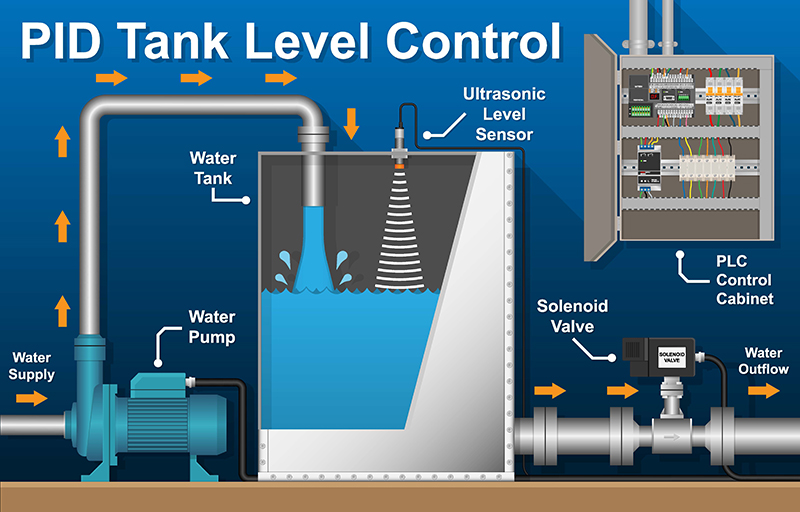
What are the applications for water pressure sensor
Water supply systems:
Monitoring and controlling the pressure in municipal water systems, pumping stations, and water treatment plants ensures efficient operation and prevents issues such as water hammer or pipe bursts.
It can process the signal sent to a controller or a programmable logic controller (PLC), which receives analog or digital input from the pressure sensor, then compares it with a pre-set setpoint, and activates control devices accordingly. The control devices can be pumps or valves, and the controller can actuate them to maintain stable water pressure.
Given that. The typical technical data of water pressure sensor recommended by an engineer is
- Pressure range: 0-500 or 1000 psi
- Accuracy: +/- 0.5% full span or better
- Operating temperature range: -40°C to 85°C
- Output signal: 4-20 mA, or 0-5/10 VDC
- Operating pressure conditions: 150% of maximum operating pressure
HVAC systems:
Measuring the pressure in water-based heating, ventilation, and air conditioning systems to optimize energy efficiency, maintain the desired temperature, and detect potential problems.
On the other hand, the water pressure sensors can benefit HVAC systems by monitoring water pressure, providing accurate feedback signals, activating control devices, and avoiding equipment damage and costly repairs. The sensors also help to reduce energy consumption and allow for scheduling of preventative maintenance to ensure reliable system operation. Technical specifications are critical to ensure the pressure sensors function optimally, such as pressure range, accuracy, operating temperature range, and the type of output signal, often optimized for compatibility with control systems or continuous monitoring equipment.
In this case, the typical technical data of water pressure sensor recommended by engineer is
- Pressure range: 0-500 or 1000 psi
- Accuracy: +/- 0.5% full span or better
- Operating temperature range: -40°C to 85°C
- Output signal: 4-20 mA, or 0-5/10 VDC
Irrigation systems:
Monitoring and controlling the pressure in agricultural irrigation systems to provide the optimal amount of water to crops, minimize water waste, and maintain the health of the system.
The water pressure sensors benefit irrigation systems by accurately measuring water pressure, adjusting flow rate to ensure efficient water usage and water conservation, improving plant growth, reducing system failures, and achieving energy savings. Technical specifications such as pressure range, accuracy, and output signals are critical to ensure the sensors are fit for use in irrigation systems, which coupled with careful management and maintenance can offer significant benefits in both crop yields improvements and savings for businesses and individuals alike.
In this case, the typical technical data of water pressure sensor recommended by engineer is
- Pressure range: 0-100 psi
- Accuracy: +/- 2% full span or better
- Operating temperature range: -20°C up to 80°C
- Output signal: 0 to 10 V or 4 to 20 mA or pulse signal
Leak detection:
The water pressure sensors also can help the leakage detection systems by monitoring water pipelines continuously, enabling early detection of leaks, fast location, minimizing damage, reducing repair costs, improving safety, and offering valuable data collection. Technical specifications on pressure range, accuracy, operating temperatures, output signal, and the sensor’s frequency response are essential criteria for selecting the water pressure sensor to ensure optimal functionality for a leakage detection system.
- Measuring: The water pressure sensors are installed in the pipeline at strategic locations to measure the water pressure. The sensors are typically inserted into a fitting or pipe, and can use a strain gauge, piezoelectric element, or capacitive diaphragm to measure the pressure of the water flowing through the pipeline.
- Monitoring: The pressure sensor provides data on the water pressure at the specific point in the pipeline where it is located. The monitored data can be used to identify any unusual pressure changes that might indicate a leak in the pipeline.
- Threshold alerts: The measured pressure is compared against pre-set thresholds. If the water pressure falls below this threshold or exceeds it significantly, an alert is triggered. This alert can be visual, audible, or sent to a remote monitoring system.
- Location identification: By comparing data readings from multiple water pressure sensors, it is possible to accurately narrow down the location of a leak. The vibration or acoustic signals from the water leaking on the pipes generate a noise that propagates through the pipes wall structures, and this noise can be detected accurately by specific sensors.
- Timely reaction: Once a leak is detected, actions such as repairing the leak or adjusting water pressure can be taken to mitigate the damage or avoid significant losses efficiently.
Some important technical specifications for water pressure sensors that benefit leakage detection include:
- Pressure range: 0-500 or 1000 psi
- Accuracy: +/- 0.5% full span or better
- Operating temperature range: -40°C to 85°C
- Output signal: 4-20 mA, or 0-5/10 VDC
- Frequency response: 20-20,000 Hz or higher
What is the limitation and risk for water pressure sensor
Limited pressure range:
Suppose a water pressure sensor has a maximum pressure range of 100 psi. Applying a pressure of 250 psi to the sensor could cause damage or result in inaccurate measurements. Choosing a sensor with an appropriate pressure range for the application is essential.
Temperature sensitivity:
A water pressure sensor with an accuracy of ±0.5% full-scale at 25°C (77°F) may experience a decrease in accuracy to ±1% full-scale at 60°C (140°F) if it is sensitive to temperature changes. Using a temperature-compensated sensor or accounting for temperature effects can help maintain accurate measurements.
Media compatibility:
For example, if a water pressure sensor uses materials that are not compatible with chlorinated water, prolonged exposure may cause corrosion and eventually lead to sensor failure. Choosing a sensor with materials that are resistant to the specific water or liquid media is crucial.
Mechanical stress: A water pressure sensor installed near a pump that generates vibrations might provide inaccurate measurements due to the vibrations. Ensuring the sensor is properly mounted and isolated from excessive mechanical stress can help prevent such issues.
Accuracy drift: A sensor with an initial accuracy of ±0.25% full-scale might experience a drift of ±0.1% full-scale after one year of use. Regular calibration and maintenance can help maintain the long-term accuracy of the sensor.
Electromagnetic interference: A sensor installed near a high-voltage power line might experience interference, causing a measurement error of ±2% full-scale. Selecting a sensor with good electromagnetic interference resistance or proper shielding can help mitigate this issue.
Installation errors: An improperly sealed sensor might allow water to enter the sensor housing, causing damage or inaccurate measurements. Ensuring proper sealing and following the manufacturer’s installation guidelines can prevent such problems.
Failure risk: A water pressure sensor with a mean time between failures (MTBF) of 100,000 hours might experience a failure after 50,000 hours of operation due to manufacturing defects or extreme operating conditions. Regular inspection and maintenance can help detect potential issues before they lead to sensor failure.
Warp up
By providing examples and numbers, we have illustrated the importance of selecting a water pressure sensor with appropriate specifications, taking into account environmental factors, installation guidelines, and regular calibration to maintain long-term accuracy. By carefully considering these factors and understanding the limitations and risks associated with water pressure sensors, you can ensure reliable and accurate measurements in your specific application.

